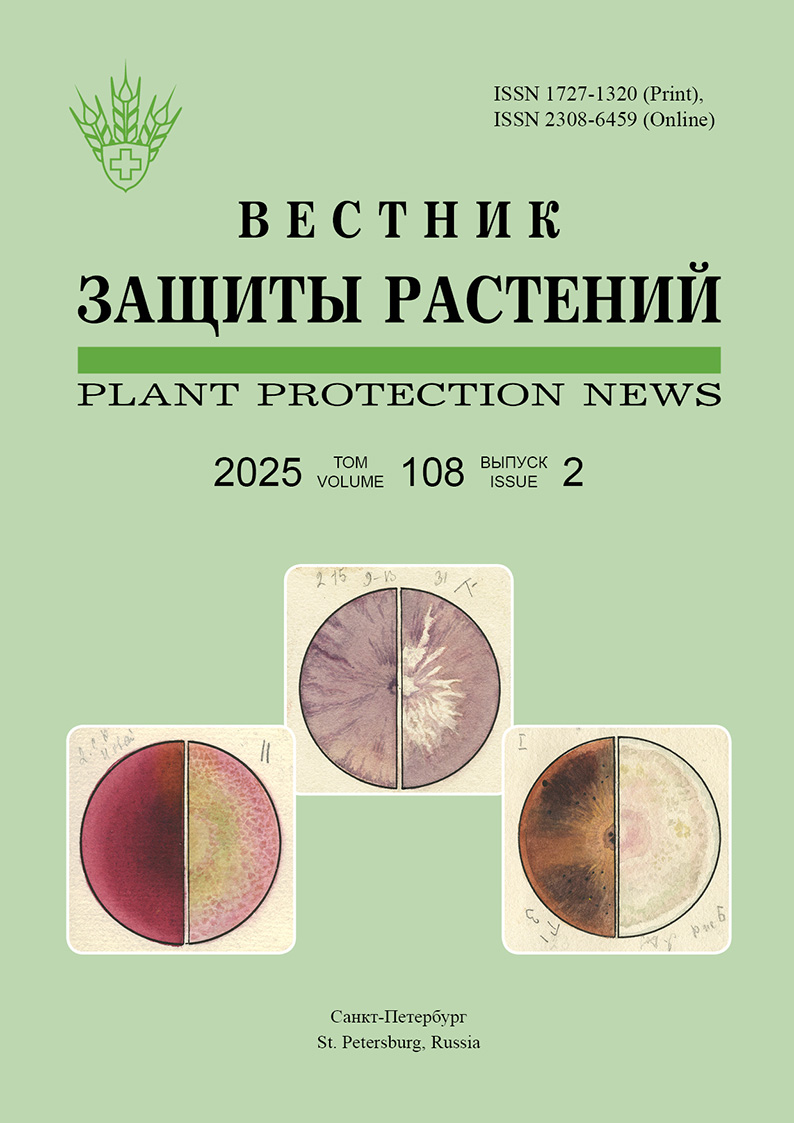The first report of the fungus Septogloeum sojae on soybean in Russia
Keywords:
Glycine max, sleeping blight, Amur Province, seed infection, pathogenicityAbstract
Soybean seed samples from 11 regions of Russia were screened for fungal infection. Nine out of 26 samples from Amur Province contained fungi similar to the soybean sleeping blight causal agent Septogloeum sojae, absent in other regions. The internal transcribed spacer (ITS) sequence was 100 % identical to homologous sequences of the representative S. sojae strain. The strains formed yeast-like, reddish-brown colonies of limited growth and abundant sporulation, 6.8 mm in diameter on potato-sucrose agar on 7th day of growth. Soybean laboratory inoculation with conidial suspension after three weeks at high humidity caused typical sleeping blight symptoms: plant top bending and rotting, pinpoint brown or blurred chlorotic spots on leaves and necrosis on petioles, leading to drying out of leaves. After five weeks, yellowish-white powdery sporodochia were formed on symptomatic shoots and petioles, and the fungus was re-isolated. This is the first report of S. sojae in Russia.



